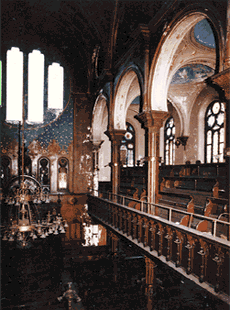
Carroll Gardens, the old Italian nabe south of Cobble Hill, has steadily been losing it character since real estate trolls discovered it and began marketing it to yuppies who couldn't afford Manhattan. But a new pizza place on Henry Street is an encouraging sign that the old ways can continue a bit longer.
Called Lucali's, its located in a space that used to belong to Louie's Candy Shop, an always deserted soda fountain, which had a beautiful old style lunchion counter and actually served authentic egg creams. (The owners never expected customers and always seemed affronted when I entered and ordered something.) It opened a couple months ago. At first glance, it looks like a trendy, old world pizzeria manque. It had rustic, plain wooden tables and chairs, a restored tin ceiling, preserved signs from the old soda fountain on the walls and no sign indicating what it was, save a little piece of paper taped to the window.
It turns out, however, that the owner and chef, Mark Iocono, is a local guy who lives nearby, and who has borrowed a little from a number of neighborhood institutions. He's taken guidance from the owners of Leonardo's, the Court Street brick-oven pizza place that closed a couple years back, and has been supplanted by a vile Dunkin' Donuts. (The espresso machine even comes from Leonardo's!) The sausage he uses is from Esposito's Pork Store and the coffee comes from D'Amico's—both Court Street legends. And Iocono gets his recipes from his grandma and aunts, though his major inspiration is the great Dom DeMarco of Di Fara. (The clumsy chunks of buffalo mozzarella and huge basil leaves are a tip-off.) How much more authentic can you get?
The pizzas are good, though not of Di Fara quality (what is?). I'd put them up there just behind Totonno's and Grimaldi's. And that's a pretty good start. Order a pepperoni pie; that Esposito knows his sausage.





